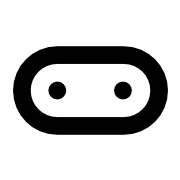Introduction to Variables in Programming
In programming, understanding the difference between constants and variables is crucial. Constants are values that remain unchanged throughout the execution of a program, such as mathematical constants like pi (3.14). In contrast, variables are used to store values that can change, such as a player's score in a game. This lesson explores how variables can hold different types of information, including numbers, strings, Booleans, sprites, and arrays.
Key Features:
- Constants vs. Variables: Learn the definitions and differences between constants and variables.
- Practical Examples: Real-life examples to illustrate the concepts, such as constants like the day of the week and variables like the current temperature.
- Types of Variables: Understand the different types of variables and their uses in programming, including numbers, strings, Booleans, sprites, and arrays.
Use Cases:
- Game Development: Use variables to track scores and player states.
- Data Management: Store and manipulate data dynamically in applications.
- Educational Tools: Teach programming concepts through interactive examples and exercises.

